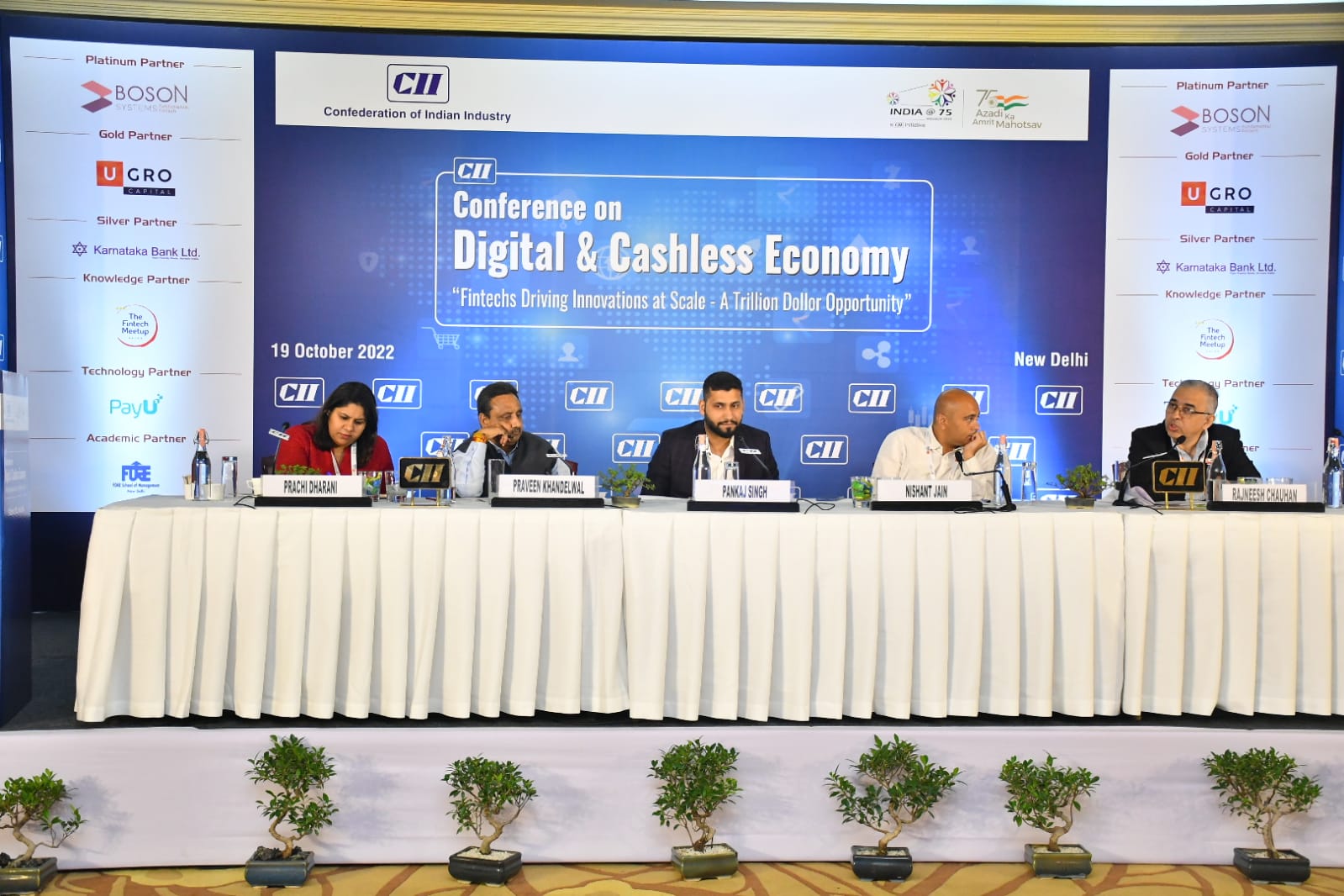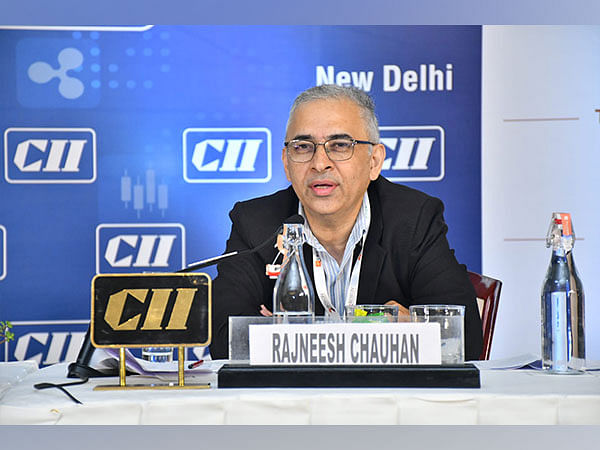New Delhi [India], October 31 (ANI/SRV): CII (The Confederation of Indian Industry) recently organized a conference on the Digital and Cashless Economy with the theme “Fintechs Driving Innovations at Scale – A Trillion Dollar Opportunity.” The event saw participation by several notable dignitaries from the finance sector, including Nishant Jain, Chief Business Officer – BharatPe; Pankaj Singh, Partner – Yatra Angel Network, Praveen Khandelwal – National General Secretary, CAIT; Rajesh Wadhwa – Chief Business Officer, M2P Fintech; Prachi Dharani – Co-founder and CEO, Payglocal Technologies; and Professor Rajneesh Chauhan – FORE School of Management.
Professor Rajneesh Chauhan was invited to share his views on the digital transformation of the economy in India, the challenges the industry is facing now in terms of adoption and how we can overcome them.
Professor Rajneesh, sharing his opinion on the matter said that the industry is aiming at achieving 1 million UPI transactions per day. However, as per current data, the average number of transactions the digital side of the economy is seeing as of now is between 10,000 to 30,000 transactions per day.
In order to overcome the challenge of bridging this gap, we need to understand that there are two sides to the digital economy – technological and non-technological. He added that at FORE School of Management, the focus is on finding solutions to improve the non-technological side to aid in faster adoption of the digital economy.
Shedding further light on the matter, he added, “Any technology that gets adopted is a combination of two things – ease of use and its perceived usefulness.” He said that ease of use can be achieved and improved through better technology. But when we talk about perceived usefulness or behavioural adoption, this is where the non-technological things come into play. Furthermore, most people think that there is only the “consumer side” to behavioural adoption. However, there is another side to it as well – the “merchant side”. He explicated that some points of hindrance that the merchant side face include issues related to rates, commissions, frozen thresholds, security, and data privacy. Another challenge, he added, is the global pointing programming and how it’s regulated.
Emphasizing the challenges faced by the merchants, he pinpointed that the industry shows slightly better adoption of the digital economy in terms of b2b transactions in the local context but not so much when it comes to the global context. And, we need to look at this whole thing from a global perspective. “Now, people are comfortable using smartphones and being online, then why is there a lack of willingness for digital adoption?” accentuated Professor Rajneesh.
Sharing his insight on this lack of willingness, he said, “We understand the problem – it’s that nobody wants financial decoupling to happen at this point in time. People want to have control and want everything all-inclusive. However, the way digital payments are regulated currently at the merchant level is slow and challenging. The amount of time it takes to catch up on SWIFT to do a fund transfer and the number of days, it reaches its destination is long. On top of that, the process to get started itself is lengthy; the amount of documentation required is tiresome – you have to submit a certificate of origin, which comes up as master document one, then there is a master document two, three, and so on and so forth.”

Praveen Khandelwal – National General Secretary, CAIT also shared similar thoughts in regards to the need for improvement of the regulatory system of digital payments. He said, “We are working tirelessly to get Digital India adopted and accepted. There is a lot of development but at the same time there has to be a seamless process, for which I would like to suggest that a player of the market should not be a regulator. We have already seen the share market and telecom sector refine their entire system by building a separate regulator. So, we also need a regulator that can take care of important submissions to deliver payments and improve the process of digital payments. Currently, NPCI is both a player and also plays the role of regulator but they have limited options. My suggestion would be that NPCI should be made the owner of the UPI, BHIM, or whatever instruments they are running across the country. My second suggestion would be the report of Watal committee should include a proposal for creation of a digital payment promotion board and that board should be empowered to monitor the fastest adoption and acceptance of digital payment in the country.”
Prof Rajneesh further stated that if we want to overcome the challenges we are currently facing in terms of digital adoption of the economy, the solution is clearly a combination of multiple players and ecosystems coming together. He said, “Now, in theory, we have come a long way in terms of automation. For example, Standard Chartered has made a strategic investment in Ripple (a leading distributed ledger company) to do international fund transfers between India, Dubai, and Singapore. However, we need to carry digitization on a larger scale to make more merchants willing to accept digital payments or have an alternative to SWIFT (or a local Ripple equivalent) within UPI that is focused on cross-border payment.” He also added, “UPI has a great infrastructure. We are working towards facilitating adoption through digital literacy and making people – both consumers and merchants – aware of the benefits they can have if they use UPI.”
Prachi Dharani – Co-founder and CEO, Payglocal Technologies, agreed with Prof. Rajneesh about multiple players and ecosystems needing to come together. She added, “We from a trader side. We push them to kind of start participating in exports with the right logistics partners, documentation, payments; when all of this will come together is when things will start moving forward. But there is a lot to be done in cross borders and need to be for a country who is focusing on export in a big way.”
This story has been provided by SRV. ANI will not be responsible in any way for the content in this article. (ANI/SRV)
This story is auto-generated from a syndicated feed. ThePrint holds no responsibility for its content.



